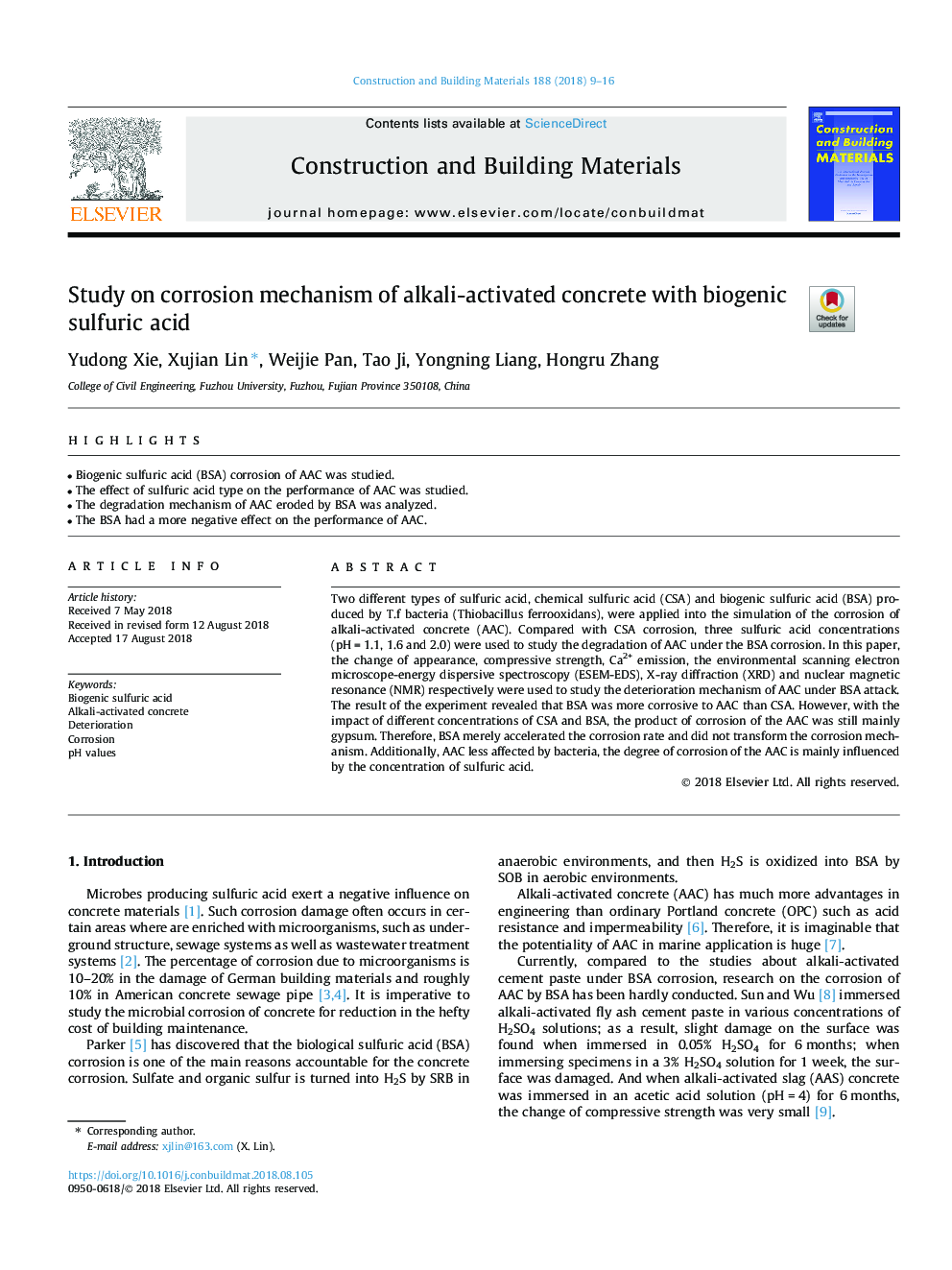| Article ID | Journal | Published Year | Pages | File Type |
|---|---|---|---|---|
| 8947033 | Construction and Building Materials | 2018 | 8 Pages |
Abstract
Two different types of sulfuric acid, chemical sulfuric acid (CSA) and biogenic sulfuric acid (BSA) produced by T.f bacteria (Thiobacillus ferrooxidans), were applied into the simulation of the corrosion of alkali-activated concrete (AAC). Compared with CSA corrosion, three sulfuric acid concentrations (pHâ¯=â¯1.1, 1.6 and 2.0) were used to study the degradation of AAC under the BSA corrosion. In this paper, the change of appearance, compressive strength, Ca2+ emission, the environmental scanning electron microscope-energy dispersive spectroscopy (ESEM-EDS), X-ray diffraction (XRD) and nuclear magnetic resonance (NMR) respectively were used to study the deterioration mechanism of AAC under BSA attack. The result of the experiment revealed that BSA was more corrosive to AAC than CSA. However, with the impact of different concentrations of CSA and BSA, the product of corrosion of the AAC was still mainly gypsum. Therefore, BSA merely accelerated the corrosion rate and did not transform the corrosion mechanism. Additionally, AAC less affected by bacteria, the degree of corrosion of the AAC is mainly influenced by the concentration of sulfuric acid.
Related Topics
Physical Sciences and Engineering
Engineering
Civil and Structural Engineering
Authors
Yudong Xie, Xujian Lin, Weijie Pan, Tao Ji, Yongning Liang, Hongru Zhang,
